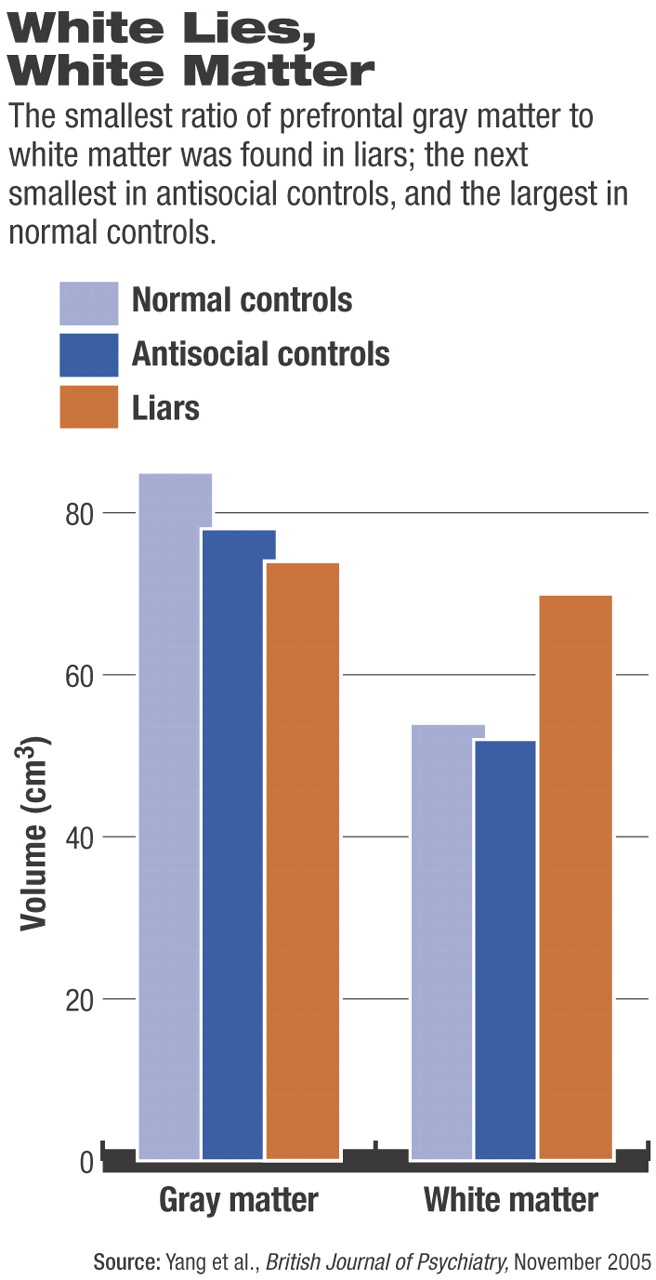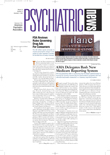The nose of the fairy-tale puppet Pinocchio may have grown longer with each lie he told. But what was going on in his head as he lied?
A new study may have the answer. It found a greater amount of prefrontal white matter in the brains of pathological liars.
“To our knowledge, this study is the first to show a brain abnormality in people who lie, cheat, and manipulate others,” the investigators said in their study report, which was published in the October British Journal of Psychiatry.
The study was headed by Yaling Yang, a doctoral student in brain and cognitive science at the University of Southern California. His team included Adrian Raine, Ph.D., a professor of psychology at the University of Southern California and among America's leading scientists when it comes to peering into the brains of antisocial individuals to learn what is going on (Psychiatric News, June 17).
Yang and his colleagues recruited subjects by advertising at temporary-employment agencies. They did not tell people interested in participating that it had to do with antisocial behavior, and especially with lying, since they also wanted to include a number of subjects who did not engage in such behaviors.
They ended up with 49 subjects—21 normal subjects, who had neither antisocial personality disorder nor a history of pathological lying; 16 subjects with antisocial personality disorder, but no history of pathological lying; and 12 subjects with a history of pathological lying. Subjects were defined as pathological liars if they fulfilled criteria for pathological lying on the Psychopathy Checklist-Revised; criteria for conning/manipulative behavior on the same checklist; the deceitfulness criterion for DSM-IV antisocial personality disorder; or criteria for malingering as indicated by admitting to telling lies to obtain sickness benefits.
None of the groups differed significantly in social class, ethnicity, I.Q., handedness, history of head injury, height, head circumference, and DSM-IV diagnoses of alcohol/drug misuse/dependence.
Yang and his team then assessed the gray-matter and white-matter volumes of all 108 subjects with structural magnetic resonance imaging.
Compared with both antisocial and normal control subjects, liars had some 25 percent more prefrontal white matter and more than a 33 percent reduction in the ratio of prefrontal gray matter to prefrontal white matter.
Yang did not expect these results, he told Psychiatric News.“ I was surprised by how significantly different the brains of pathological liars and the brains of controls were,” he said. “And I was surprised that the answer to pathological lying may be in white matter. To date, neuroscientists still focus more on gray matter, which is the neural cell bodies of the brain, than on white matter, which is the connection between cells.”
Indeed, since white matter is pivotal to the connectivity and cognitive function of the human brain, increased prefrontal white matter might confer a predisposition to lying, Sean Spence, M.D., a professor of psychiatry at the University of Sheffield in England and a deception authority, speculates in an accompanying editorial. On the other hand, he cautioned, “We do not know whether the findings reflect cause or effect (whether anatomy drives deception or is driven by its practice).”
Also unknown, he added, is whether the study results apply only to “a subgroup of unemployed antisocial people who resort to deception for instrumental gain, but who are not necessarily very good at lying” or also apply to “those successful social predators who lie and cheat and yet retain enormous influence in the world.”
And as Spence told Psychiatric News, “I don't think the study changes what a psychiatrist would do in the clinic at the moment, but I think the scientific study of deception will gradually inform the way people think about practice that relies so heavily upon subjective accounts.”
The study was funded by the National Institute of Mental Health and the Wacker Foundation.
Br J Psychiatry 2005 187 320

